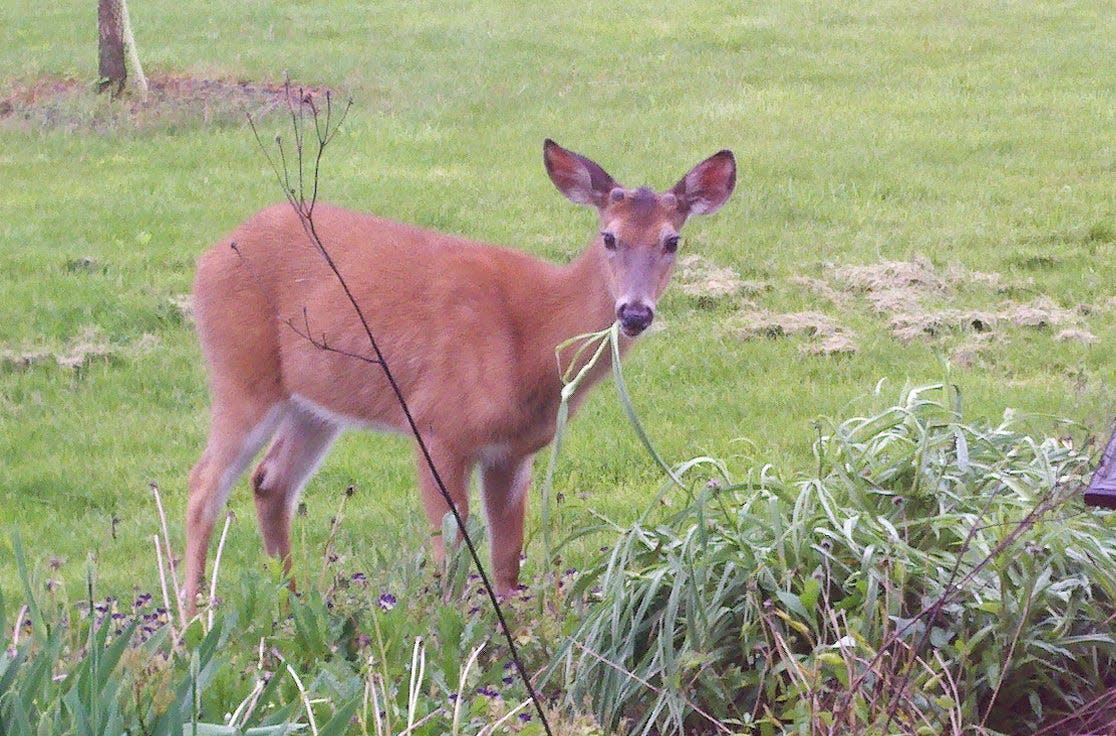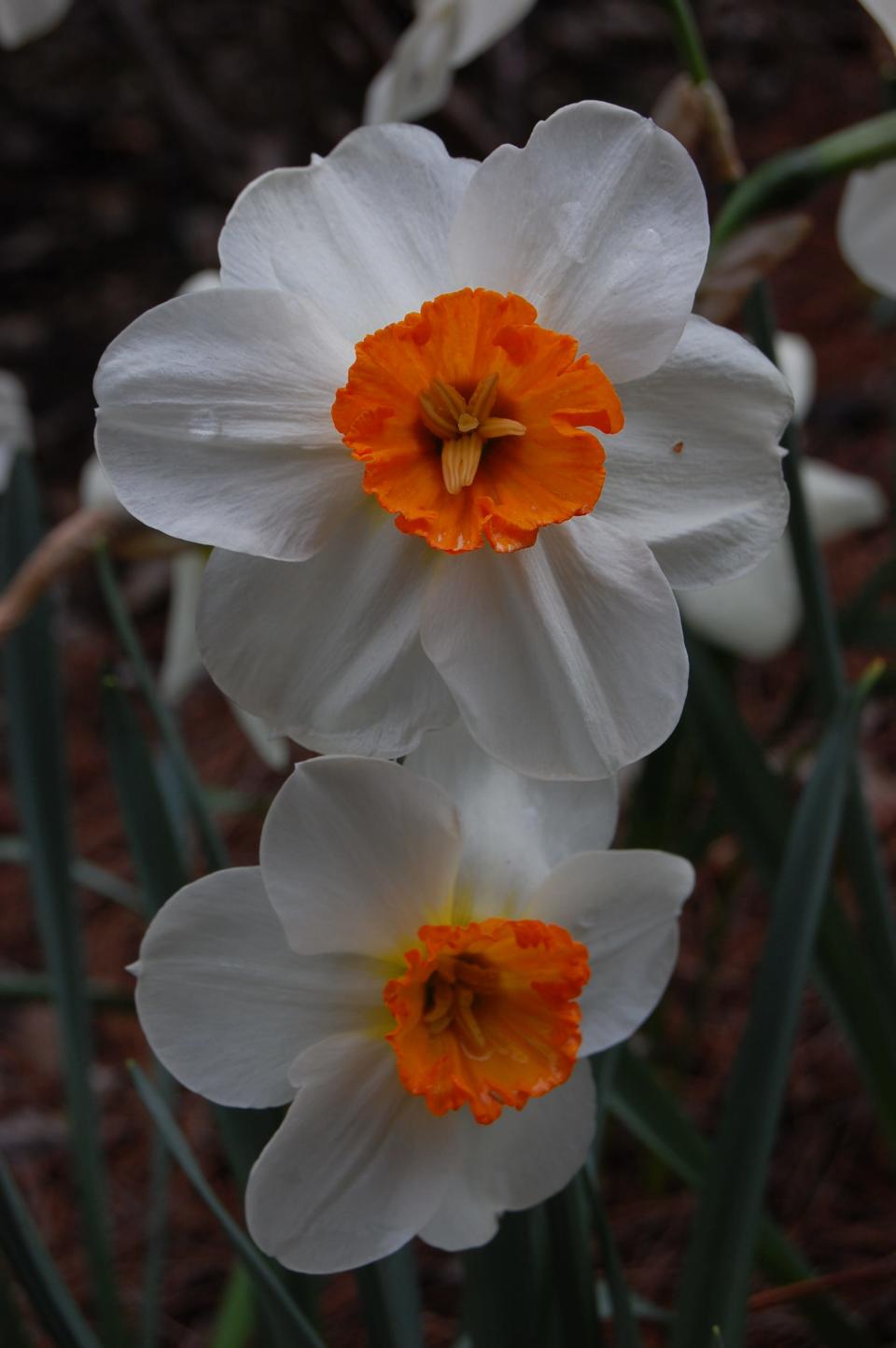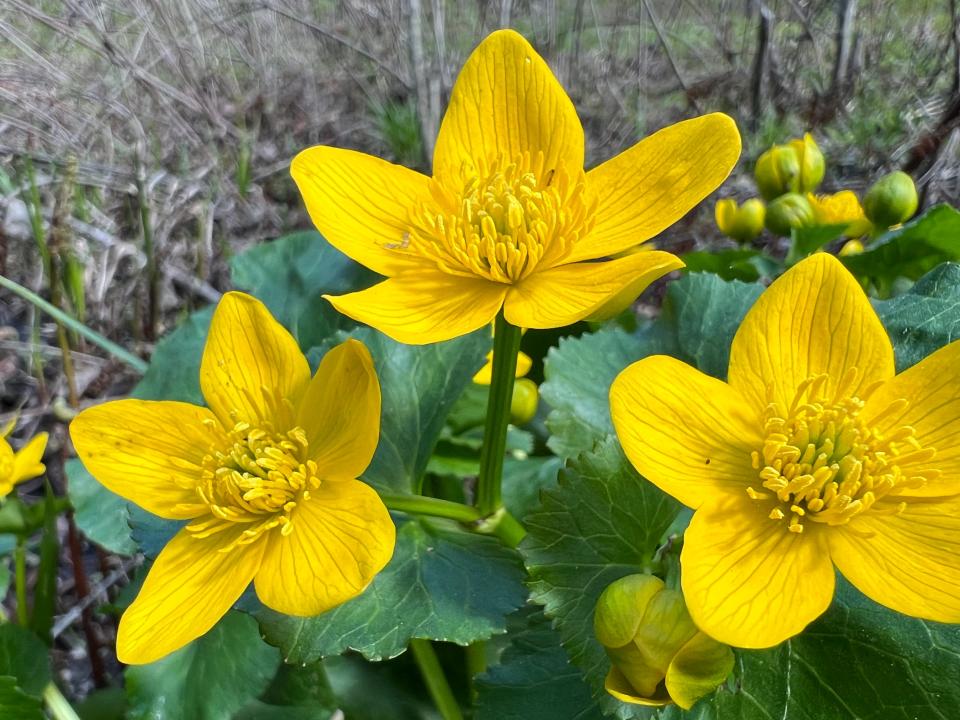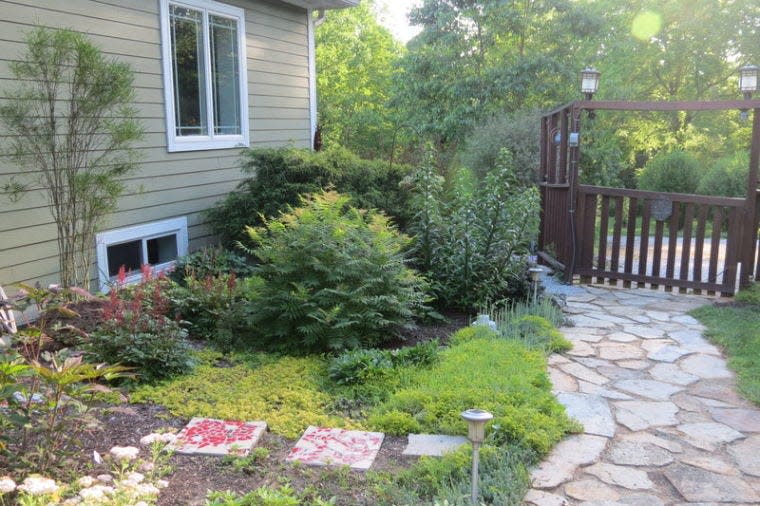Deer eating your plants? These 3 tips may prevent them from devouring your garden

There are few topics in the world that can more quickly and totally turn demur and otherwise level-headed gardeners into raving lunatics, torch-wielding zealots and polarized psychopaths than deer.
Let's face it. When it comes to deer and gardens, you’re either a Bambi lover or a Rambo fan. Other than those who live in 4th-floor condos, there are rarely many folks camped out in the middle ground on the topic.
Of course, nobody starts out hating deer. They’re about the most docile, dainty, and polite members of the animal kingdom — a bit like koalas with long legs. But when they first show up in the garden... that’s when the rubber hits the road and people start to splinter into distant camps: those who run out and buy a 500-pound bag of deer chow to feed their newfound friends — and those who turn into garden-version of Snidely Whiplash. (Born after 1970? Look him up!)
The easiest way to keep deer from mowing down your prized plants is to simply plant what they don’t like — it’s pretty straightforward. If you were trying to keep me out of your fancy dinner party, just put Brussels sprouts and Lima beans on the menu. No exotic ruse required. Want colorful spring bulbs but you have a resident deer herd to rival the Zambezi wildebeest migration? Stick with daffodils rather than tulips. Lose the lilies and plant coneflowers. There are a thousand lists available online and elsewhere of plants deer won't eat.

You may like: Win big at the Kentucky Derby? 6 things you should spend your money on in the garden
The problem is, the textbook definition of a gardener is, one who grows first what one cannot have and second, what one shouldn’t try to grow or something that is guaranteed to fail. (True confessions — I once ordered a plant because the catalog description said something like “Please don’t buy this plant — we guarantee you will kill it — if you do insist on buying it, please order three to give yourself a fighting chance." I ordered three!)
So let's assume that you live in a place where deer show up from time to time, and for some reason, you insist on growing plants that you don't want your deer to eat. What tools do you have at your disposal?
These 'at home' deer repellents don't work

Now, I know I’ll get hate mail on this part. But there's an almost endless list of things that have been suggested for generations but that just doesn’t stack up.
Among the long-held stars of both the internet and handed down gardening wisdom would include things like human hair, bars of soap, coffee grounds, and a host of other things that might work for a minute, and with a deer population that you can count on one hand, but they’re not all that helpful in the long run.
The next category of remedies that tend to be less than successful is the "plant a bunch of these around your other plants and deer will stay away" technique. Marigolds, garlic, lavender, oregano and about a thousand other things have worked their way into the lore of deer-proofing your garden. And while this may all sound like it makes perfect sense, the honest truth is it's more wishful than effective, despite what all the websites out there say.
You may like: Worried your shrubs are dead? What to know before you cutback your plants this spring
Of course, there is an unending list of goofy little devices that are supposed to emit a magical sound (that humans can't hear!) that scares away the deer and, I understand, is particularly favored by owners of New York City bridges and Florida swampland. The motion-activated sprinklers, lights, and even talk radios ... they may work for a few days but the deer catch on pretty quickly.
Then there’s the truly undesirable — rotten eggs, coyote urine (really?), and for the winner ... gardener’s urine! I think if this is where you are in your battle with deer, you might want to choose another hobby other than gardening!
These tips for deer control work if you use them consistently

This is easily the widest category. And most of these options involve applying something directly to your plants or to the area around your plants that will encourage the deer to dine elsewhere. There are commercial sprays that many people have found effective. Liquid Fence, Bobbex, Deer Away ... everyone has their favorite.
Two simple homemade sprays that also seem to work are equal parts whole milk and water and the raw egg/water mixture. Sprays containing hot pepper oil also work but I’ve found them pretty nasty to deal with — especially on a windy day!
The key with these sprays is starting early and applying consistently. If you spray weekly starting as spring leaves emerge, you’ll keep the deer from establishing a feeding pattern that includes your garden. After a month or two you can go to once or twice a month as a subtle reminder. And with many of the commercial and home remedy sprays, you may need to apply after heavy rain.
You may like: My plant looks bad. How can I tell if it's dead or alive? Here are three things to know
Most Effective Deer Control

Assuming a crocodile infested moat would be forbidden by your neighborhood association policies, the only real option you have in this category is a fence. To be effective, deer fencing needs to be at least 8-feet tall, pinned to the ground no more than every 6 feet (they are amazingly adept at wiggling under a fence) and supported with posts that can handle the full force of a 175-pound deer at full gallop.
It ain’t cheap, it takes constant maintenance, and it’s not guaranteed.
Deer can jump an 8-foot-tall fence if sufficiently motivated. But the concept here is to create something that is sufficiently annoying and inconveniencing to the deer that they go and feed on your neighbor’s hostas rather than deal with your fence.
Aside from the cost and ongoing maintenance, deer fencing may not be an option in your neighborhood due to either local code or HOA rule. Check with the appropriate authorities before you start.
Paul Cappiello is the executive director at Yew Dell Botanical Gardens, 6220 Old Lagrange Road, yewdellgardens.org.
This article originally appeared on Louisville Courier Journal: Try these 3 tips to prevent deer from eating your plants

